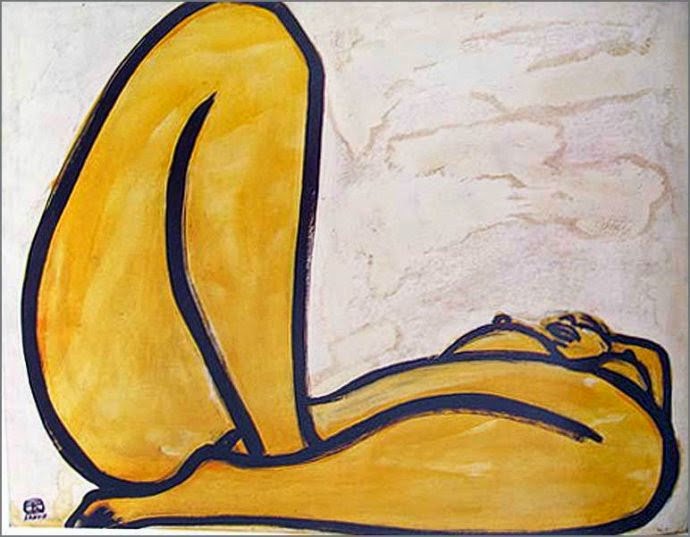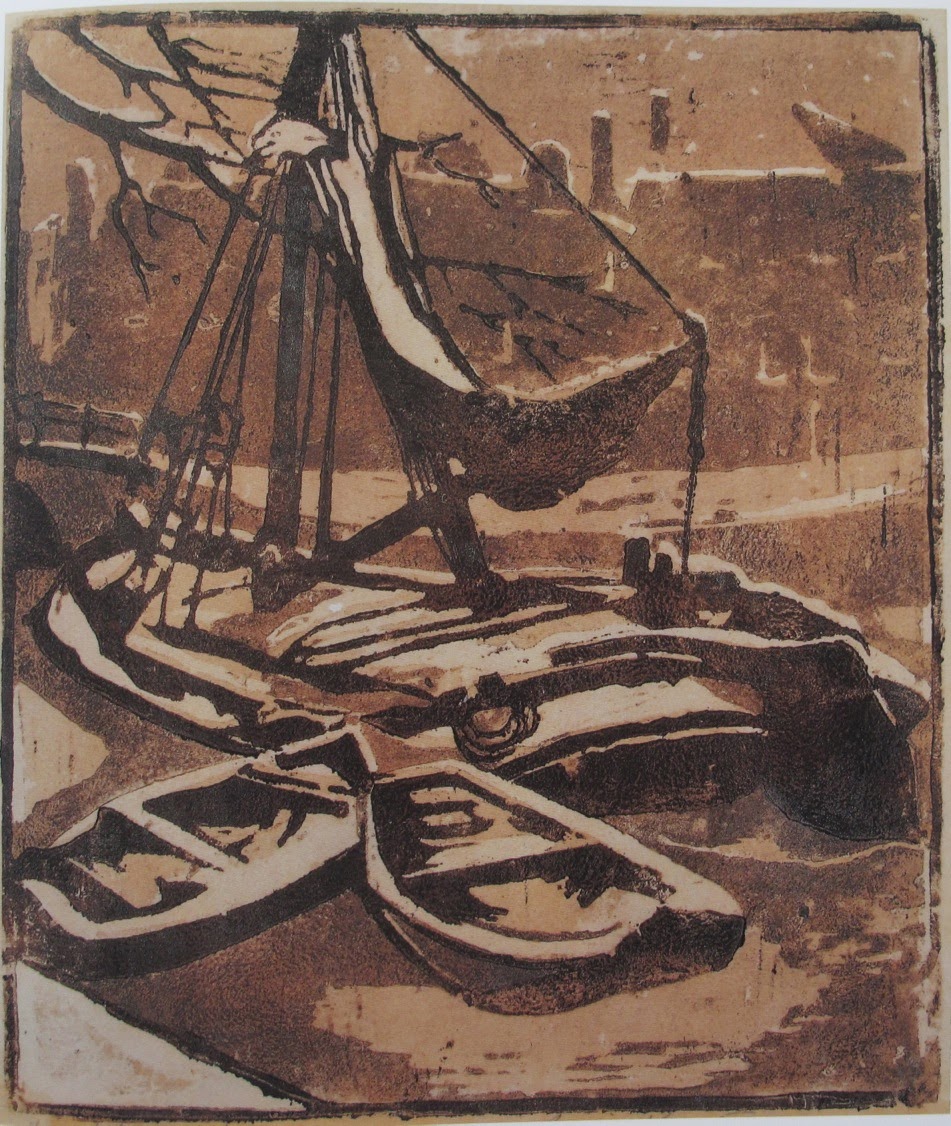Sanyu
(San Yu or Chang Yu, 常玉)
(Nanchung 14 October 1901 - 1966 Paris
Chinese-French painter and sculptor
and printmaker.
In last posting I met with Paul Emille Gallien, so called "master of the black line". Researching this French artist and filling my bucket so to speak I couldn't help stumbling over another but very different black line magician. Also in Paris. At the same time, arriving in 1921 and after two years of study in Berlin, returned to stay permanently in 1923.
Although this Blog is mainly concerned with printmaking and Sanyu is as much a printmaker as I am an art expert I cannot resist showing some of his works that left me in wonder for quite a while. The art and training of the traditional Chinese black line + calligraphy + abstraction" mixed and infused with modernist Paris creating a unique style, at least that is what I think.
The aesthete Sanyu was always experimenting with form and composition, arranging and rearranging his models to find the perfect composition.
Although once famous and adulated Sanyu, he exhibited even in Amsterdam before WW2, died in abject poverty and obscurity in his Paris studio in 1966.
You can read here* and here* about Sanyu's life and career. In the second link you can find many more examples of Sanyu's work.
All pictures borrowed freely from the Internet for friendly, educational and non commercial use only.





















.jpg)





















_Groningen_NL.jpg)











